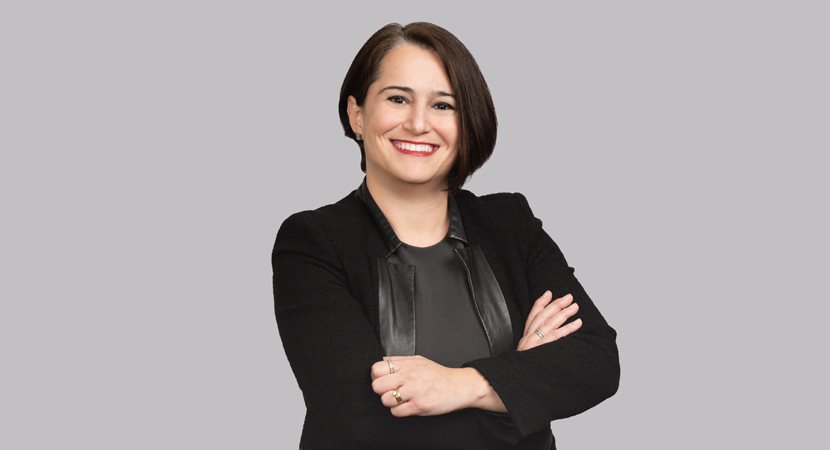In this month’s FinReg Round-Up, we wish you continued good health and safety as we all continue to navigate the COVID-19 pandemic and the challenges of doing business in this difficult time.
After the first round of Paycheck Protection Program (PPP) loan funding was quickly drained, the second round is being distributed more slowly due to a number of factors. Applicants are being given an unprecedented amount of guidance on the rapidly developing program. For those who have secured PPP loans, we outline initial steps to take in reviewing your loan package, as well as how to request forgiveness of your PPP loan. Finally, we discuss new developments in the forthcoming Main Street Lending Program, including new loan options and a new FAQ that addresses issues including borrower eligibility.
- Paycheck Protection Program
- You Have Been Approved for a PPP Loan—Now What?
- Main Street Lending Program
Paycheck Protection Program
Implementation of the Paycheck Protection Program (PPP) continues and remains extremely fluid. Fifteen interim final rules and 48 FAQs implementing the PPP have been issued in less than two months. This flood of guidance is extremely unusual, if not unprecedented. Because of the rapidly changing regulatory landscape, the Small Business Administration (SBA) is generally allowing applicants to rely on the guidance in the interim final rules and FAQs that were published as of the date of the application (although some of the guidance has been applied retroactively, with a safe harbor to return PPP funds).
Interestingly, after the swift depletion of funds in the first round of the PPP, which resulted in thousands of applicants being unable to receive loans, the second round of the PPP still has funds remaining (reportedly around $100 billion). This is likely due to a number of factors, including the smaller average loan size approved in the second round (approximately $71,000 as opposed to $206,000 in the first round) and lingering questions regarding eligibility and the criteria for forgiveness.
You Have Been Approved for a PPP Loan—Now What?
Your application was approved for a PPP loan made available as part of the Coronavirus Aid, Relief, and Economic Security (CARES) Act. Now what should you do?
Following the approval, you will receive a loan package prepared by your lender, which may contain a loan agreement and/or promissory note. As the SBA did not propose a specific format for loan documents, each lender under the PPP must create its own. Most lenders, however, have adapted the SBA’s standard form of loan documentation for the PPP loans.
In reviewing the loan documents, you should confirm that the documents reference the ability to have the loan forgiven under the PPP. While not required under the PPP, some of the lenders have required that the loan proceeds be deposited in an account at the lender institution, with the loan documents giving the lender the right to offset any amounts due under the PPP loan from that account. These provisions may be problematic if your business has a line of credit with another lender that requires all accounts to be at that lender.
In addition, you need to make sure the incurrence of the PPP loan does not require the consent of your current business lender. Once your business receives the PPP loan funds, you have eight weeks to use the funds appropriately in order to meet loan forgiveness criteria. Otherwise, you must repay the loan over a two-year period that commences six months after the PPP loan was disbursed to your business.
The SBA also just issued much-awaited guidance on how borrowers can secure forgiveness of their PPP loan.
Under the new procedures, a borrower must formally request the forgiveness of PPP loan proceeds by filing SBA Form 3508, the “Paycheck Protection Program Loan Forgiveness Application.” The application has four components:
(1) PPP Loan Forgiveness Calculation Form
(2) PPP Schedule A
(3) PPP Schedule A Worksheet
(4) PPP Borrower Demographic Information Form (optional)
Borrowers are required to submit items (1) and (2) to their lender. As guidance is continually being updated, we are on the lookout for further amendments.
Main Street Lending Program
We briefly discussed the Federal Reserve’s creation of the Main Street Lending Program (MSLP) in the April FinReg Roundup. Since then, the Federal Reserve has developed several loan options in advance of the program’s launch date, which has not yet been announced.
The Federal Reserve received more than 2,200 comment letters on its initial term sheets for the Main Street New Loan Facility and the Main Street Expanded Loan Facility. In response to this input, the Federal Reserve updated the terms of both the New Loan Facility and the Expanded Loan Facility, and created a new loan option with increased lender risk sharing, called the Main Street Priority Loan Facility. In addition, the Federal Reserve lowered the minimum loan size of the New Loan Facility and Priority Loan Facility to $500,000, expanded the pool of eligible borrowers, and changed the reference interest rate to Libor plus 3% instead of an adjustable rate based on SOFR.
The Federal Reserve also released lengthy FAQs addressing a number of issues in connection with the MSLP, including borrower eligibility, required certifications and covenants, and guidance for MSLP lenders on underwriting and regulatory treatment of MSLP loans.
Although the initial goal was for the MSLP to launch in early May, the program has not yet started, and there is no clear indication of when the program might open up. The level of interest in the marketplace for the MSLP loans remains to be seen.
-
 Senior Counsel
Senior Counsel -
 Partner
Partner
)